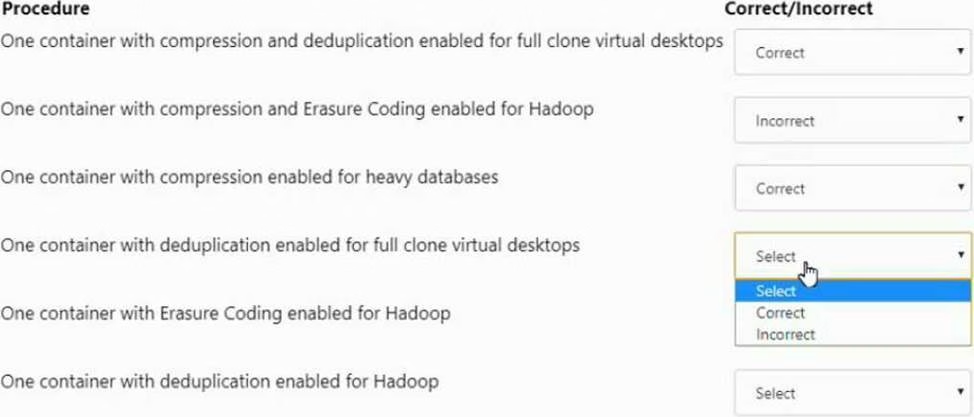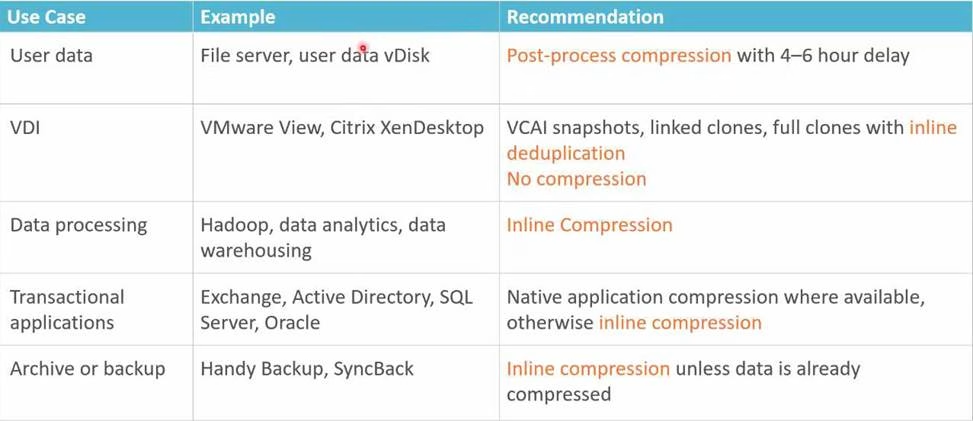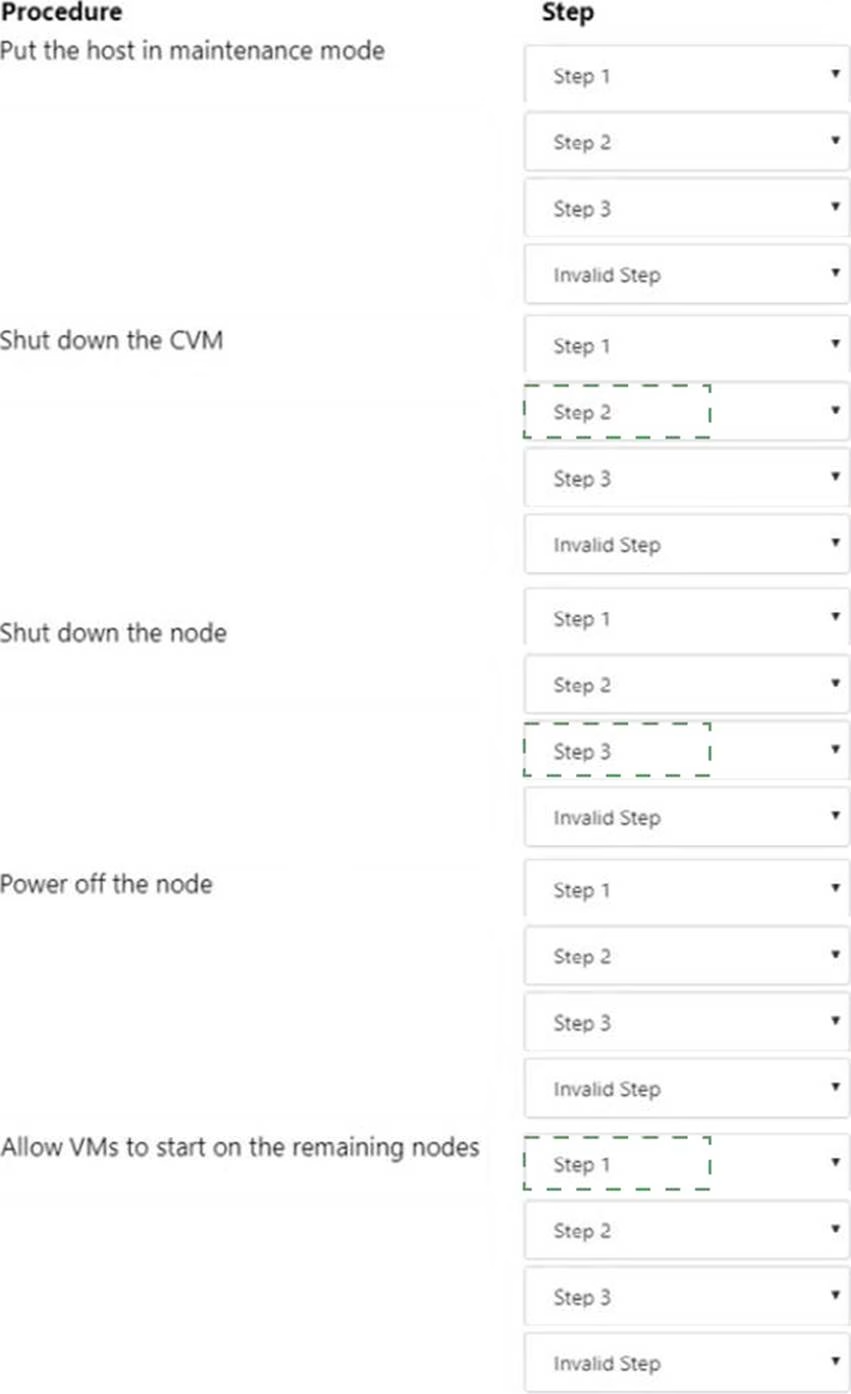Nutanix NCS-Core Nutanix Certified Services Core Infrastructure Professional Online Training
Nutanix NCS-Core Online Training
The questions for NCS-Core were last updated at Dec 02,2025.
- Exam Code: NCS-Core
- Exam Name: Nutanix Certified Services Core Infrastructure Professional
- Certification Provider: Nutanix
- Latest update: Dec 02,2025
A customer needs a DR solution designed around the following requirements:
• There are 8 ms of latency between Sites A and B
• The administrator needs the shortest RPO/RTO possible
• Application consistent snapshots are required
• Use of Nutanix VSS
Which Data Protection Method should be used?
- A . Async
- B . Metro Availability
- C . Near Sync
- D . Cloud Connect
An administrator needs to replace the self-signed certificate on a cluster.
Which two requirements must be met as part of the process? (Choose two.)
- A . The cluster administrator must restart the interface gateway.
- B . The signed, intermediate and root certificates are chained.
- C . The existing certificate must be deleted prior to replacement.
- D . The imported files for the custom certificate must be PEM encoded.
An administrator needs to evaluate if the existing configuration of Protection Domains meets the specified corporate recovery policy for SQL Data. The corporate policy requires that all SQL Servers be recoverable at the DR site within 30 minutes, and must result in a maximum of 60 minutes of data loss. SQL data must be required.
The protection domain is configured as follows:
• Application consistent snapshots are enabled
• The SQL server VMs are assigned to the Protection Domain as their own Consistency Group
• The Protection Domain schedule is configured as snapshots taken every 90 minutes from 7 am until 8 pm
What must be changed to meet the required policy?
- A . Revise the schedule tc be 15 minutes
- B . Revise the schedule to be 60 minutes
- C . Revise the schedule to be 30 minutes
- D . Revise the schedule to be 45 minutes
An administrator is monitoring the Nutanix v5.15-based AOS cluster performance logs and notices that a SQL server VM is greatly exceeding its intended maximum IOPS. The administrator has confirmed that a QoS policy was previously created for the group of VMs this server is a member of.
What are two reasons that this VM would exceed its maximum configured IOPS from the QoS Policy? (Choose two.)
- A . The VM is missing the required snapshot needed to implement the QoS Policy.
- B . The VM was not created as an AFS virtual machine.
- C . The SQL Server VM has volume groups attached.
- D . It was cloned from another SQL Server VM that was a member of the QoS Policy.
An administrator needs to make sure an RF3 cluster can survive a failure of two complete racks
without negatively affecting performance.
The current cluster configuration consists of the following:
• 30 All Flash Nodes: distributed 10 nodes per rack across three 42U racks
• Each node is configured with 20TB usable storage all flash (Cluster Total 600TB Usable)
• Current cluster utilization is 500TB storage
• Storage containers have Erasure Coding enabled
Which configuration changes should be made to make sure the cluster meets the requirements?
- A . Expand the cluster to 50 nodes distributed evenly across 5 racks
- B . Expand the cluster to 48 nodes distributed evenly across 6 racks
- C . Expand the cluster to 60 nodes distributed evenly across 6 racks
- D . Expand the cluster to 40 nodes distributed evenly across 5 racks
An administrator is managing multiple Windows and Linux VMs connected to Nutanix Volumes. The Linux VMs are experiencing intermittent connectivity issues. The Windows VMs do not experience the same issue.
Which option should the administrator use to resolve this issue?
- A . Utilize Jumbo Frames
- B . Add additional disks to the Volume Group
- C . Set the SCSI timeout value to 60
- D . Utilize a separate subnet for the Linux VMs
An administrator has two clusters: Site A and Site B.
Async DR is configured between the clusters as follows:
• Site A is the Primary Site
• Site B is the Secondary inactive Site, no VMs running
• Site A is fully in Production
• Site B used as Backup/Disaster Recovery
The customer wants to perform a planned failover between the sites.
How should the administrator accomplish this?
- A . Click Activate on the Secondary site within the Data Protection Dashboard
- B . Click Activate on the Secondary site and run deactive NCLI command on Primary site
- C . Choose Migrate on the Secondary site within the Data Protection Dashboard
- D . Choose Migrate on the Primary site within the Data Protection Dashboard
Refer to the exhibit.
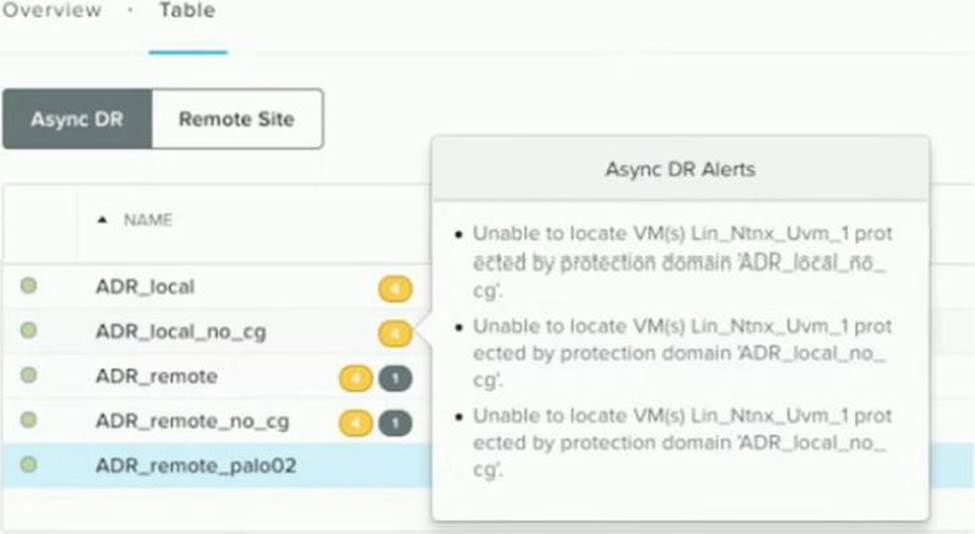
After performing ESXi to AHV conversion on a cluster, the alerts shown in the exhibit display on Prism.
What should the administrator do to resolve this issue efficiently?
- A . Remove the VMs. create a new Protection Domain, and add VMs to it
- B . Remove VMs from the Protection Domain and add them back in.
- C . Delete the Protection Domain, create a new Protection Domain, and add the VMs to it
- D . Create a new Protection Domain and add the VMs to rt.
HOTSPOT
An administrator is configuring an All Flash cluster to support the following workloads:
• Full clone virtual desktops
• Hadoop
• Write heavy databases
Which three correct configuration options should the administrator use to meet the item requirements? (Choose three.)
For each procedure, indicate whether it is a correct or incorrect procedure that must be configured to meet the item requirements using the drop-down option.
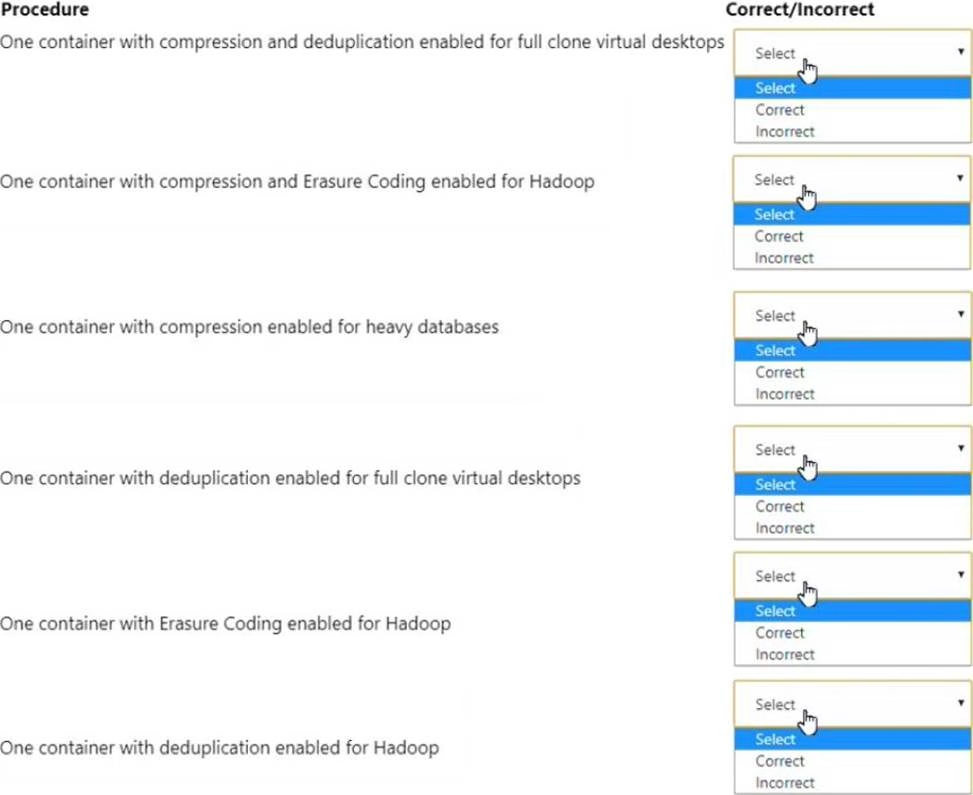
HOTSPOT
A system administrator needs to shut down an AHV node in a Nutanix cluster without causing service disruption. The administrator checks data resiliency and verifies that the cluster can tolerate a node down.
Which three steps should the administrator perform next? (Choose three.)
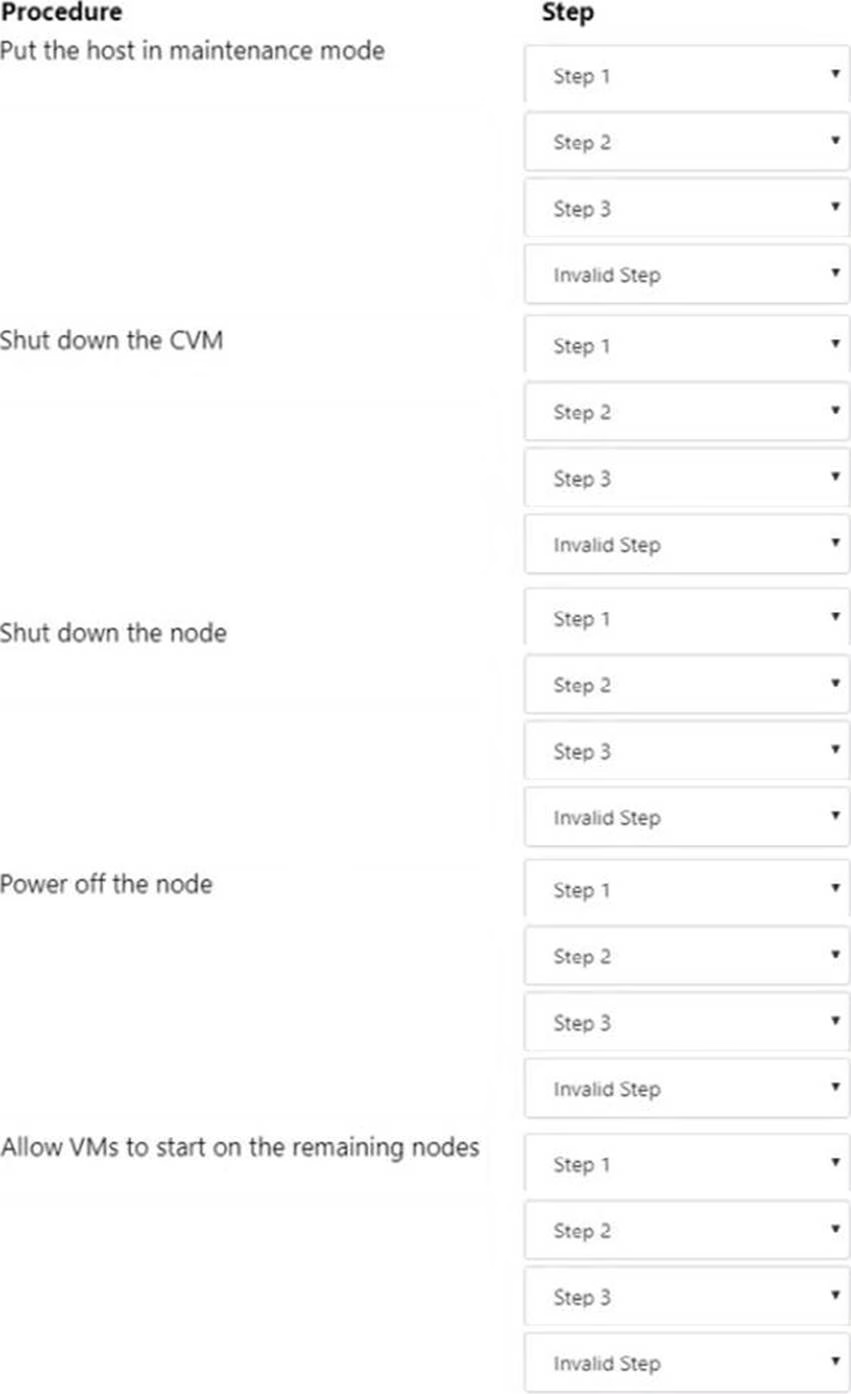
Latest NCS-Core Dumps Valid Version with 191 Q&As
Latest And Valid Q&A | Instant Download | Once Fail, Full Refund



